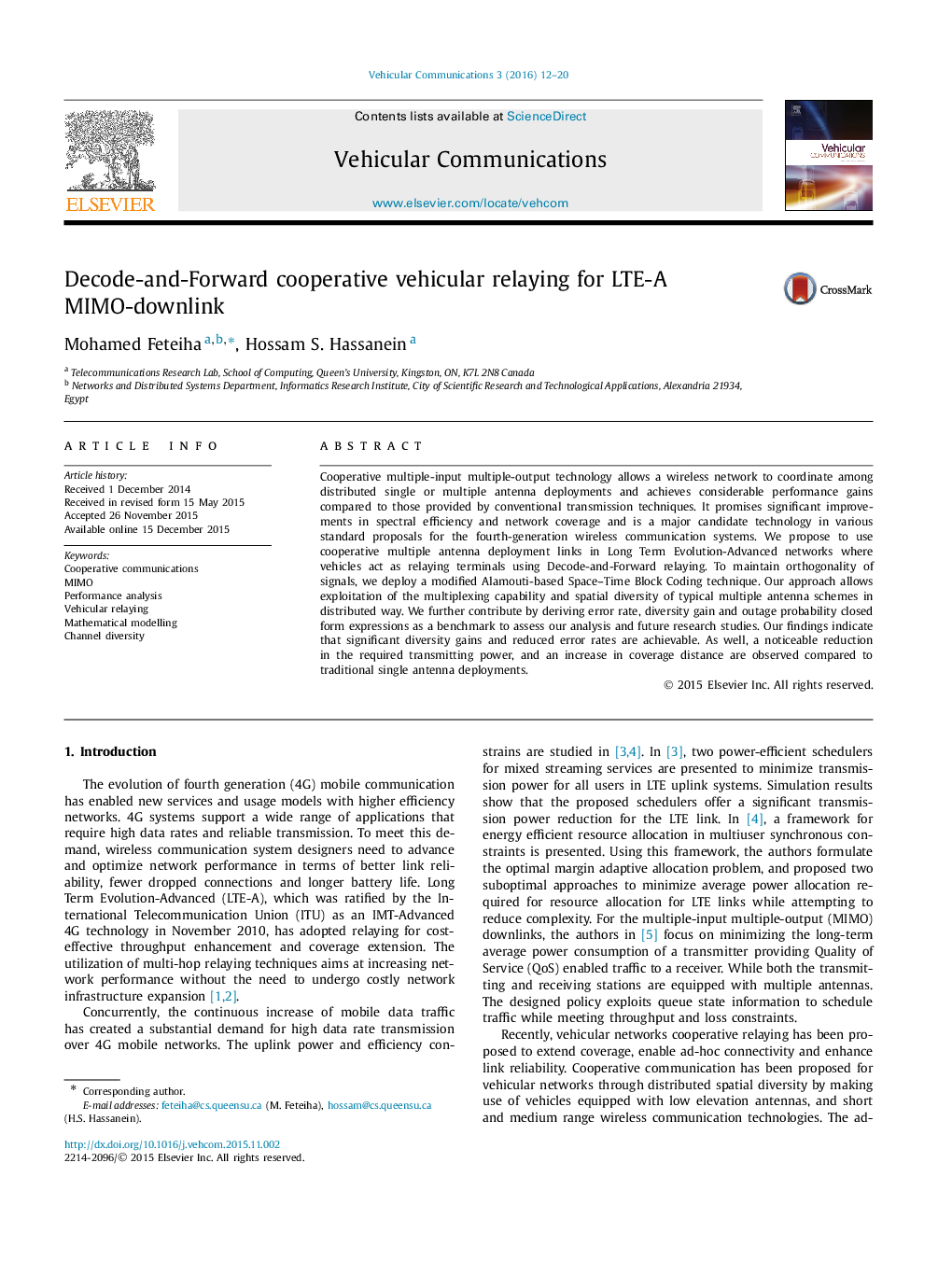| Article ID | Journal | Published Year | Pages | File Type |
|---|---|---|---|---|
| 465704 | Vehicular Communications | 2016 | 9 Pages |
Cooperative multiple-input multiple-output technology allows a wireless network to coordinate among distributed single or multiple antenna deployments and achieves considerable performance gains compared to those provided by conventional transmission techniques. It promises significant improvements in spectral efficiency and network coverage and is a major candidate technology in various standard proposals for the fourth-generation wireless communication systems. We propose to use cooperative multiple antenna deployment links in Long Term Evolution-Advanced networks where vehicles act as relaying terminals using Decode-and-Forward relaying. To maintain orthogonality of signals, we deploy a modified Alamouti-based Space–Time Block Coding technique. Our approach allows exploitation of the multiplexing capability and spatial diversity of typical multiple antenna schemes in distributed way. We further contribute by deriving error rate, diversity gain and outage probability closed form expressions as a benchmark to assess our analysis and future research studies. Our findings indicate that significant diversity gains and reduced error rates are achievable. As well, a noticeable reduction in the required transmitting power, and an increase in coverage distance are observed compared to traditional single antenna deployments.
